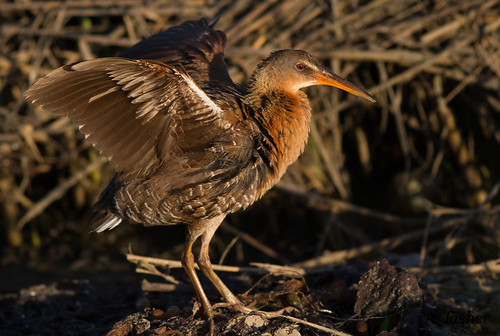BUBO Listing News
From American Birding Association's Birding Magazine (October 2016)
BUBO is a listing website geared toward “friendly comparison” with other birders. About 3,500 birders worldwide use BUBO, tallying everything from world life lists to ABA year lists. An interesting aspect of BUBO is that you can view everyone else’s lists, poking around to find out where other birders are in their listing quests and gleaning tips on where to find coveted species.
Read the full "World Listing Softwa
The most recent two updates, 6.2 from April and 6.3 from July, of the IOC World List have now been applied in BUBO Listing.
Taxonomic updates are applied as normal, and you will be notified if any updates impact you.
We have just completed applying the August 2016 updates to the eBird/Clements list. Several splits will impact BUBO Listers, including Leach's Storm-Petrel, Emerald Dove, Western Scrub-Jay, Greater Short-toed Lark and Crested Lark. There are a few lumps as well, including Caribbean Coot and Barbary Falcon - hopefully the net effect is that most listers will gain.
Taxonomic updates are applied as normal, and you will be notified if any updates impact you. The updated Clements checklist can be viewed in full.
IOC updates will be applied in a couple of weeks.
The latest version 6.1 of the IOC world list is now available. Five new species have been added, with Sedge Wren the most likely addition for BUBO Listers.
The long overdue updates to both the AOU North and Middle American checklist and the ABA area checklist, have also been added. Amongst the most interesting changes for listers include the split of Ridgway's Rail from Clapper Rail, Xantus's Murrelet split into Scripps's and Guadalupe, Sage Sparrow split into Sagebrush Sparrow and Bell’s Sparrow, acceptance of both Fea's and Zino's Petrels, as well as a number of exotic species now considered established, including Egyptian Goose, Nanday Parakeet and Rosy-faced Lovebird.
It's been a long time coming but we have just completed an upgrade to BUBO Listing, including moving to a new server. You'll notice a neater, easier to read, fresher look to all pages and a few fun features, including:
- Share your lists on Facebook and Twitter! Look for the buttons at the bottom when you are viewing a list, and you can tweet it, like it or share it with your online friends. Why not share your life list every time you get a major addition? Or share your targets and ask people to look out for the top ones!
- Similarly you can share other content on BUBO Listing, not just lists.
- The latest list update at the top of each page will now show an image of the species in question (assuming we can find one, with a matching scientific name, that is). Also you can go directly to view the list that has been updated.
- A wide range of new bird photos on the homepage.
Coming soon will be the latest IOC updates...

